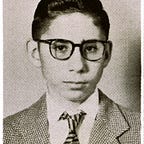In Search Of A Style With Siouxsie & Budgie
When Colt introduced its single action Colt Army Peacemaker in 1873 it revolutionized the “art” of killing. If you had the money to buy one (and many did) you could compete with anybody and more so if you knew how to use it. I see that gun having a parallel with the proliferation in the 21stcentury of good digital cameras. I believe that the Colt evened out the playing field in the 19thcentury and now in the 21stcentury the same has happened with cameras and how they affected photographers who use them.
When I began to work for Vancouver Magazine in the late 70s and Les Wiseman (the writer) and yours truly (the photographer) started covering rock concerts (local and from abroad) for the In One Ear column, we discussed how we could do it differently.
Our experimentation happened at the Commodore Ballroom, the Smilin’ Buddha, Gary Taylor’s and UBC’s Sub Ballroom.
We quickly figured out that even though we were given access to shoot in what we called the media pit (right next to the stage floor) my pictures looked like anybody else’s or not as good.
At the time there were two choices. You either used what we called a head-on flash (like the one in the picture here) or you shot very fast film that was pushed to higher ratings.
The problem with the above is that the methods used to place photographs in a magazine or newspaper was photo-mechanical and not digital. If there was no separation between a musician’s head and the black background the picture could not be used. In fact pictures surrounded by black were editorial no-nos. Art directors loved low contrast.
The flash up close minimized the dark background. But it was difficult to impose a personal style. The only style involved was how important your magazine was so that access became the style. I attempted to use slow shutters (1/8, ¼ and slower) when using the flash so that I would get some sharpness but some ghosting blurs at the same time.
Soon even that was passé and Wiseman and I narrowed our approach to personal interviews with the band members or the lead member either in their hotel or at sound check in their dressing rooms. I would bring a very heavy studio flash (it was a QC-I000) and a couple of heads. This plus the light stands and a seamless paper were all heavy and Wiseman had to help.
At the time the record companies were all powerful and one had to kowtow to the “Record Rep”. We were nice to them and they soon liked our exclusive coverage which involved Wiseman’s exceptional writing style. Wiseman believed in doing copious research (an in an era before Google) this meant many trips to the library. Soon we were sort of able to call the shots. We would, “If we cannot get access back stage or at the hotel, forget it!”
The bands that Wiseman picked were all based on his extremely snobbish (thank God) tastes. Many times nobody knew about them and after the In One Ear Column was out we garnered lots of hip prestige in knowing before anybody else a band’s rising fame.
The pictures you see here of Siouxie Sioux I believe I took in 1981. Wiseman says the hotel shots were taken in the concrete one on the corner of Granville and Helmcken which I believe is now called the Chateau Granville. He reminded me that somehow we had to go up stairs with my heavy equipment.
The lights were expensive but the camera I used was the one you see here and or a more modern one called a Pentax Spotmatic-F. At the time I liked to use extreme wide angles and got close to my subjects. I particularly liked a 20mm. The film was Kodak Technical Pan which was slow (25 ISO).
For the concert shots I still used the slow film and a slow shutter. My lens would have been the 55mm here or an 80mm Komura.
Until a recent past I taught at Focal Point a photography school in Vancouver and did two years at VanArts, downtown. The former closed its doors three years ago and VanArts fired me as they said that I was not a good fit for their school.
I remember once when I told my students that it was virtually impossible to shoot band at concerts in an original way. One particular female student was extremely aggressive and told me I knew nothing and had no experience. She told me that my rock swirls (the slow shutter ones) were simply bad photography.
I tried to stress that the single most important aspect in personal photography was to develop a personal style. I called the personal style the Holy Grail of photography. But it was to no avail and I see now, more than ever pictures of performing bands (sharp, well exposed, bright colours, etc) that are boring, banal and all pretty well look the same. In fact if you are in front of a band at a concert with a very good camera I guarantee that the pictures you will take will look like somebody else’s. In 1982 having the pictures “turn out” was not a sure thing. It is now a sure thing but that does not necessarily include style.
In the group of pictures here you can see the descent from the interesting (Siouxie playing the devil with her hands) to the sofa shot with her drummer Budgie to the ordinary concert pictures I took at the Commodore. You might note that I had access to one side of the stage so I got profiles. To me the only saving grace of these pictures is Siouxie’s fishnets.
A Goth Banshie
Originally published at blog.alexwaterhousehayward.com.
